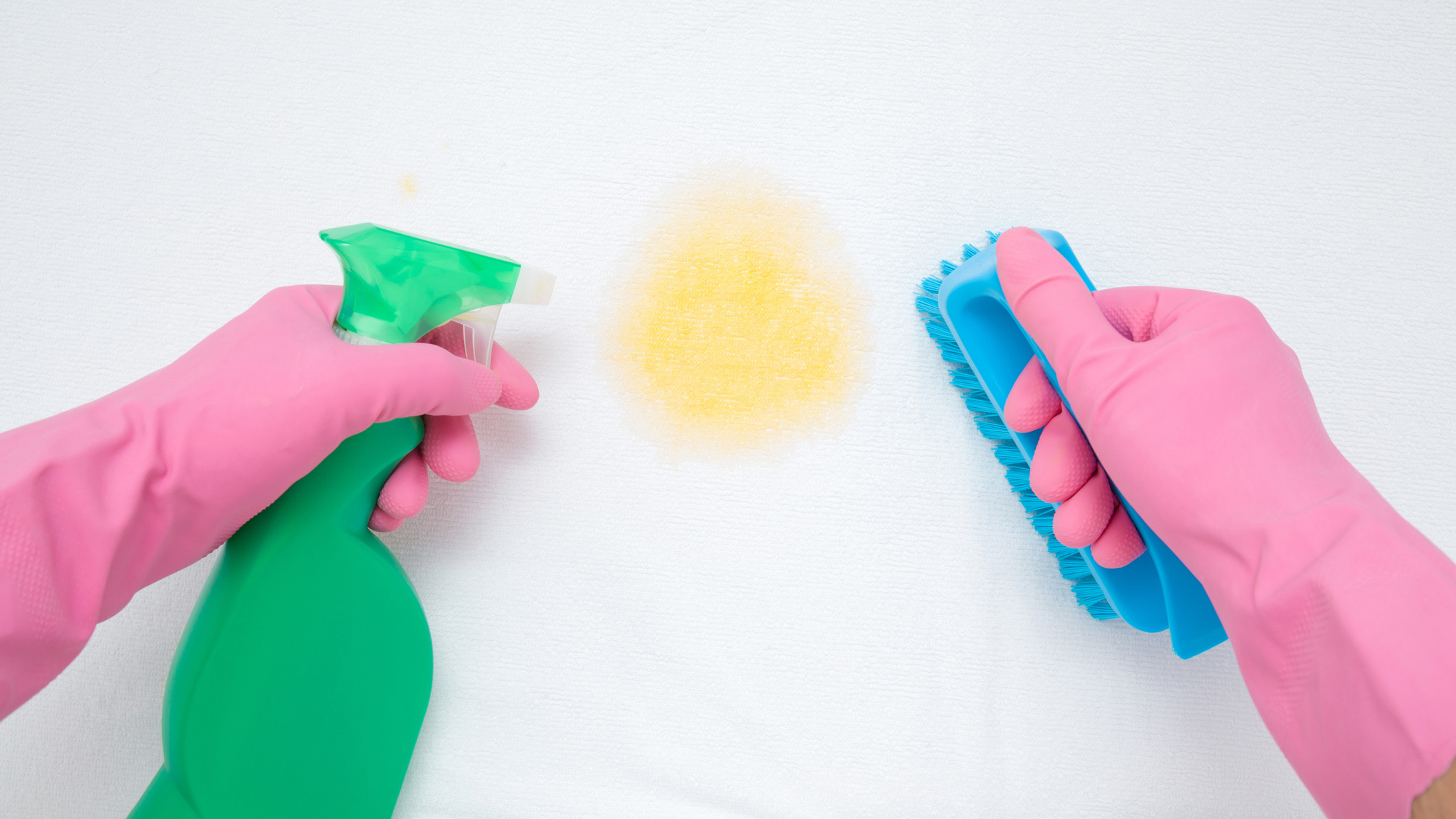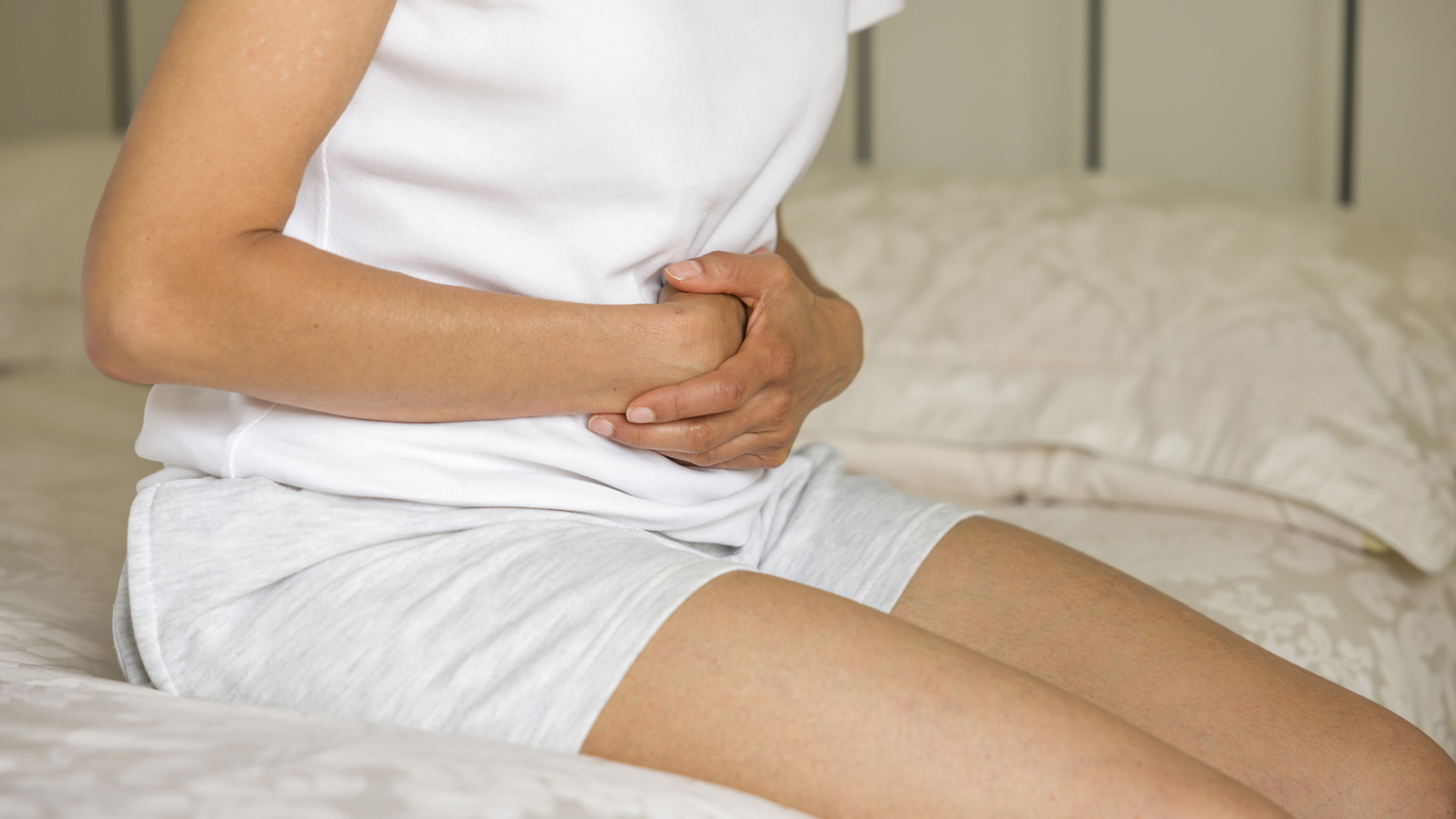Have you spotted ugly yellow stains on your mattress? Although unsightly, especially when they start turning brown, yellow stains on a mattress are fairly common. This is definitely true if you’ve owned your mattress for a number of years, and luckily there are ways to get most of them out.
There are many reasons why mattresses turn yellow, and even the best mattresses fall foul of these stains over time if they aren’t properly protected.
To get to the bottom of why it happens, we asked Yordan Yordanov, an upholstery and mattress cleaning expert at Fantastic Services, to explain the top four causes of yellow mattress stains, how to remove them (if they can be), and how to tell if they’re safe to sleep on. As it turns out, only one of them is safe.
Yellow mattress stains: The top four causes
- 1. Mattress old age (these stains can't be removed)
- 2. Sweat and body oils (can be removed)
- 3. Urine (can be removed)
- 4. Vomit (can be removed)
1. Mattress old age and natural decay
Like most things in life, as your mattress ages it’s prone to natural decay. “The main reason for this is oxidation,” Yordanov explains. “It’s a natural process aided by exposure to the effects of the sun.”
This yellowing isn’t harmful... And oxidation can be slowed with a mattress protector
Yordan Yordanov, cleaning expert
This natural process can’t be stopped entirely. However, you can slow the march of time by limiting the mattress's exposure to direct sunlight. “If you're airing your mattress outside, it’s best to choose a shaded but warm spot,” Yordanov advises.
“The good news is that this type of yellowing isn’t harmful in any way. The bad news is that it can’t be removed. Still, oxidation can be slowed down with a good mattress protector, but you have to make sure you get one that goes all the way around the mattress.”
2. Urine (human and animal)
Whether it’s from a human or a pet, pee can quickly cause yellow stains to spread on a mattress if left untreated. But here’s the good news: according to Yordanov, fresh and dry urine stains on a mattress can be removed.

How to remove yellow mattress stains caused by urine
“To remove fresh stains, it's best to treat them as soon as you notice,” Yordanov tells us. “First, blot the excess urine with dry fabric but be careful not to rub, as that will surely set it in. Next, mix equal parts of water and white vinegar and spray the area generously.
“Finally, sprinkle some baking soda on top and let it sit overnight (or at least for eight hours). Once dry, vacuum the residue and inspect the stain and repeat the procedure if you’re not satisfied with the result.”
Dry pee stains are harder to remove. “Here you’ll need to create a solution of 8oz hydrogen peroxide, 3 tablespoons baking soda and two to three drops of liquid dish soap,” says Yordanov. “Spray the stained area and wait until it's dry before vacuuming the residue. You might want to do this several times depending on how bad the dry stain is.”
3. Sweat and body oils secreted each night
Sweating and excreting body oils is a normal bodily function, and these two fluids are also among the main causes of why pillows turn yellow.
When sweat and body oils build up over time, they can cause yellow stains on a mattress. While stubborn to clean, this type of staining can be removed. In fact, Yordanov says there are two “very good methods” to try, and these often pop up during tutorials on how to clean a mattress.
The longer you leave bicarbonate to work the better. Several hours should do it, and for a really stained mattress, leave it overnight.
Yordan Yordanov
How to remove yellow mattress stains caused by sweat
For the first method, grab some baking soda and a bristle brush. “The good thing about sodium bicarbonate is that it absorbs moisture and unpleasant odours, which makes it effective when cleaning the mattress,” Yordanov says.
“Sprinkle the entire mattress. Once done, gently rub it into the mattress with a bristle brush. The longer you leave bicarbonate to work the better. Several hours should do it, and for a really stained and dirty mattress, leave it overnight.” Vacuum away the residue when you’re done.
For the second method, Yordanov recommends the following:
- Create a solution using one cup of 3% hydrogen peroxide
- One cup of 3% hydrogen peroxide
- Two to three tablespoons of baking soda
- A few drops of mild liquid dishwashing soap
- Stir the mix until the soda dissolves completely
- Spray the entire stained area
- Leave the solution to soak in
- Air dry the mattress for at least an hour
- Speed up the drying process by using a fan or blow dryer on cool

4. Vomit also causes yellow and brown stains
If you’ve vomited in bed, it can turn your mattress yellow very quickly. Luckily, you can get these stains out — but you’ll need a strong stomach for the first bit.
How to remove yellow mattress stains caused by vomit
“First, scoop the vomit off of the bed. Then, remove all your bedding and wash it at a high temperature to kill any germs.
“Next,” says Yordanov, “grab an old rag or a paper towel and dab the stain. Mix some warm water and a mild detergent and spot clean the area. After that, mix three parts of white vinegar with one part of water and blot the spot with the solution. This will not only clean the stain but also disinfect and deodorise it.”
For next-level disinfection and deodorization, follow Yordanov’s final tips but check the care instructions for your mattress first to ensure it can withstand the following products…
“To disinfect completely, spray the area with some rubbing alcohol (and add some essential oils if you want to reduce its strong smell). To remove any lasting odour, sprinkle on some baking soda, which will absorb the smell. Don't forget to vacuum the residue once it dissipates.”
Are yellow mattress stains safe to sleep on?
According to experts, the answer to this question depends on what has caused the yellowing. “If the yellowing is due to oxidation only, and good hygiene has been observed, then you’re completely safe,” Yordanov reassures us.
But in all other cases, a deep cleaning is recommended to be on the safe side. “If you notice any itching, coughing or allergic reactions, it might be a sign that there’s mould. That is a major health hazard and must be treated immediately because it grows fast, it’s difficult to clean, and is especially dangerous to people with asthma.

“Dust mites feed on dead skin cells, sweat and bacteria, and their droppings also trigger allergies in some people. To help combat these adverse effects, bedding should be changed weekly and the mattress should be cleaned and vacuumed every two to three months.”
Wondering how often you should replace a mattress? The average lifespan of a mattress is six to ten years, depending on what it’s made from, so if you’ve had yours for longer and its showing signs of sagging, and wear and tear, including yellow stains, it’s time to replace it.
There's a higher turnover with pillows, with experts recommending you change them every one to two years. Need a new one? Then take a look at our guide to this year's best pillows for all sleep positions.
How to prevent yellow staining
The best way to ward off yellow stains on a mattress is to safeguard against them from day one. A good mattress protector is your friend here, and we’ve rounded up some of our favorites below. Depending on the type you buy, they can protect against bed bugs and bacteria, as well as vomit, urine and sweat.
According to Yordanov, deep cleaning your mattress also helps keep it stain-free for longer. “The mattress itself should be steam or dry cleaned according to the label requirements once a year. In between, you could vacuum it regularly to prevent dirt, dust and dead skin cell build-up, or deep clean it from stains, which will sanitize it.”
You may find that your bed topper has developed yellow stains too, and in many cases you can use the above tips to get them out. If you decide your topper has seen better days though, take a look at our guide to the best mattress toppers for comfier, healthier sleep.
Read more:
from TechRadar - All the latest technology news https://ift.tt/4GNwd3b




0 Comments